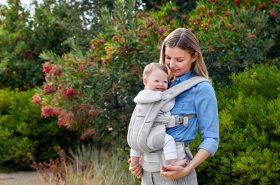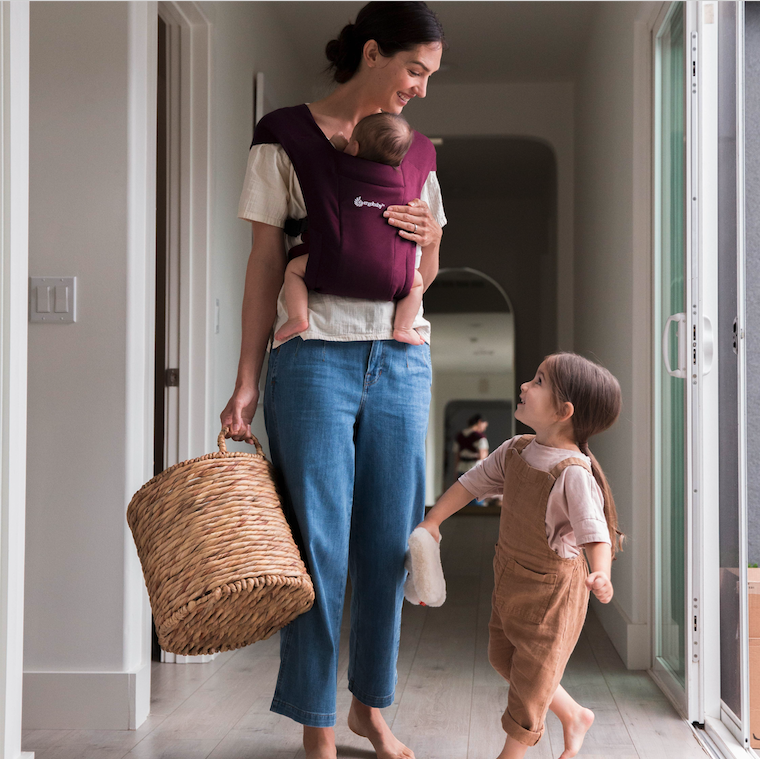
The first year of a child’s life brings with it remarkable — and often awe-inspiring — changes and development. From the moment they’re born, babies are immersed in multi-sensory experiences that inspire them to observe, explore, and respond to the world around them. Here are three amazing transformations you’ll watch in Baby’s first year.
Vision developments
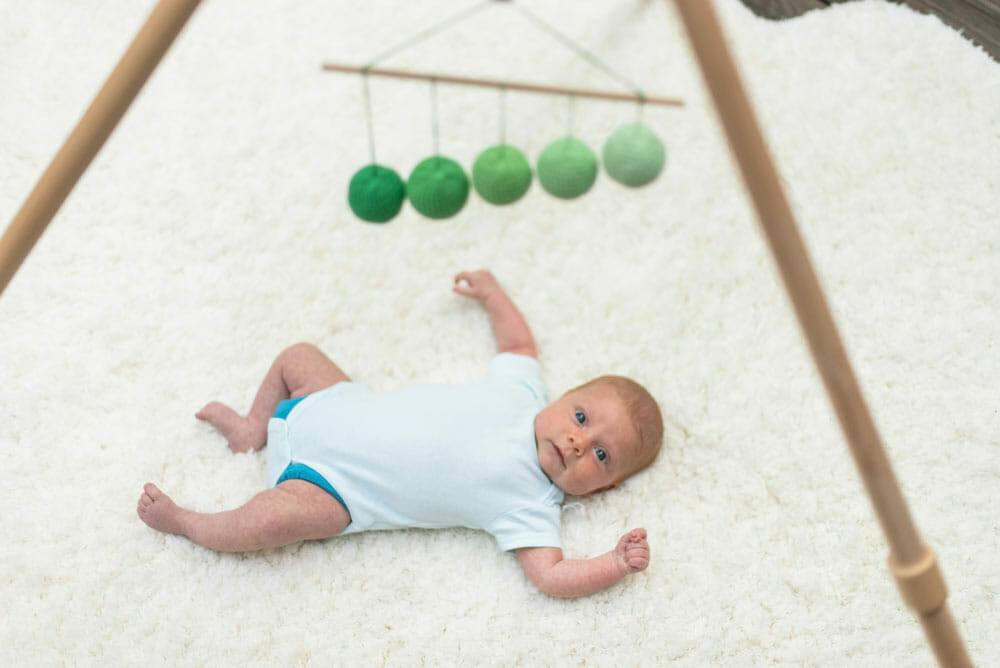
Gobbi mobile from Monti Kids
Born this way. At birth, a baby’s vision is limited to about 8″–10″, which happens to be the general distance between parent and child. While colour recognition isn’t yet fully developed, babies are fascinated by contrasting patterns and objects, which is why Montessori’s Munari mobiles are so captivating. (Learn more about how to introduce mobiles to a newborn.)
Milestone: Coordination. For the first two months, infants’ eyes may cross or wander, a normal result of their developing eye muscles. By around three months of age, however, their eyes are typically strong enough to track movements, compelling them to reach for things in their immediate surrounds.
Milestone: Chromatic sense. By about five months of age, a baby’s eyes are more sensitive to colour and capable of perceiving objects three-dimensionally. With this newfound depth perception, babies can often spot a parent from across a room, see images through a window, and even recognise an object when only seeing part of it.
Milestone: Eye-hand control. When babies are about 10 months old, they can generally see and judge distance well enough to grasp something between their thumbs and forefingers. By their one-year mark, their hand-eye coordination is much improved, just in time to feed themselves birthday cake!
Muscles & Movement
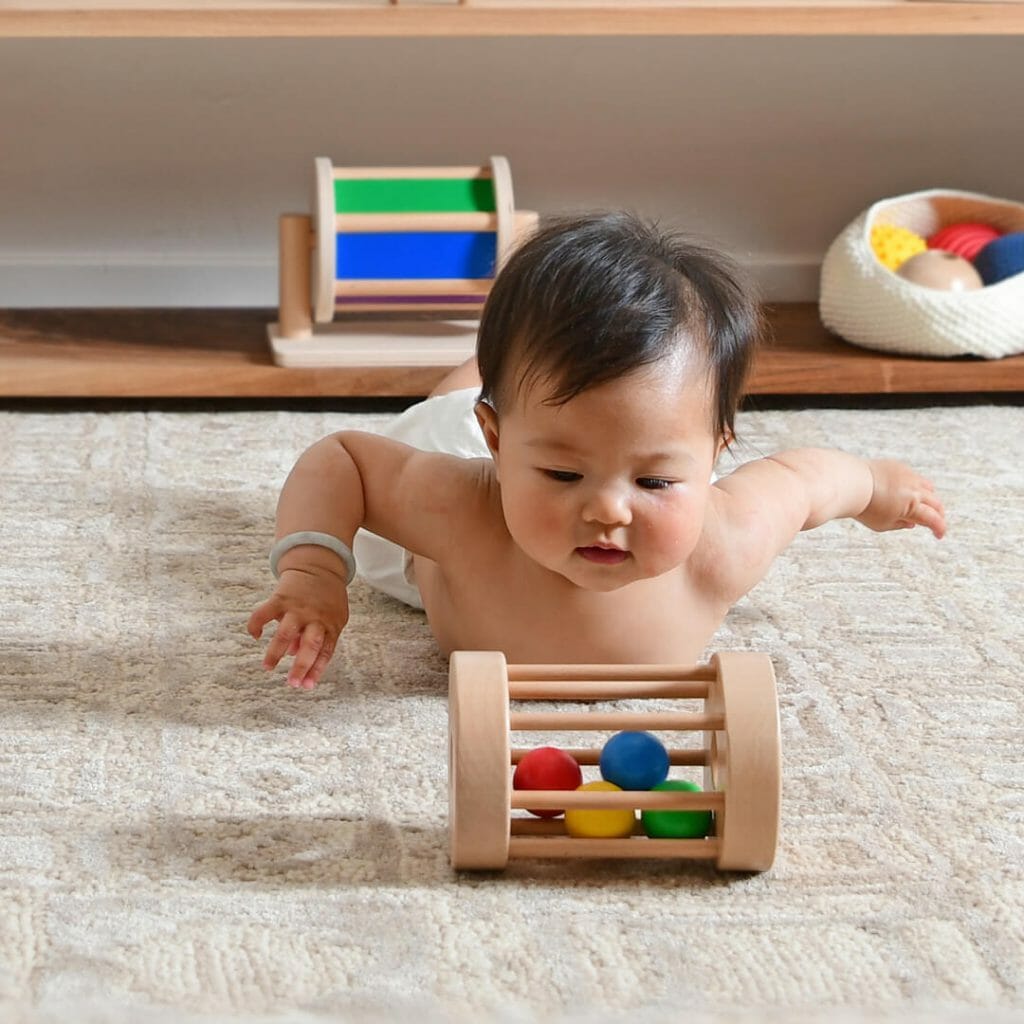
This Rolling Drum comes in the Monti Kids Level 3 subscription box.
Born this way. Babies are born with reflexes and involuntary movements to help them suck (root), swallow, breathe, and eliminate, but have little control of their bodies. If you put something in a baby’s hand (like a rattle), their fingers will naturally close in on it.
Milestone: Self-expression. Around six to twelve weeks of age, babies reward you with a real smile! They might also kick their feet or wave their arms when they see or hear someone they recognise, a non-verbal way of expressing excitement, anticipation, and awareness.
Milestone: Moving with intention. From about three to six months, babies learn how to roll over and enjoy “tummy time.” This position allows babies to stretch and strengthen their bodies. They can practice pushing up and exploring with their hands. Holding up their heads in this position also helps babies strengthen their necks. Giving babies something to look at, like a child-safe mirror, a soft or slow-rolling toy like a spinning drum directs their attention and keeps them engaged.
Crawling often begins anywhere from six to nine months, along with assisted standing and pulling up on furniture. Some fine motor skills begin around this time, too, like playing patty cake and peek-a-boo.
You’ll find that babies like to put everything in their mouths at this stage—this is completely normal. The reason? Nerve endings in babies’ mouths help them gather information and discover, for example, if something is warm or cool, hard or soft, smooth or rough.
Toward the first year’s end, some babies take their first steps, crawl while holding a toy, and pick up small items like Cheerios or bits of cut-up fruit. Since they get more traction when barefoot, exploring indoors without socks enables babies to crawl, scoot, cruise, and climb without slipping.
Language explosions
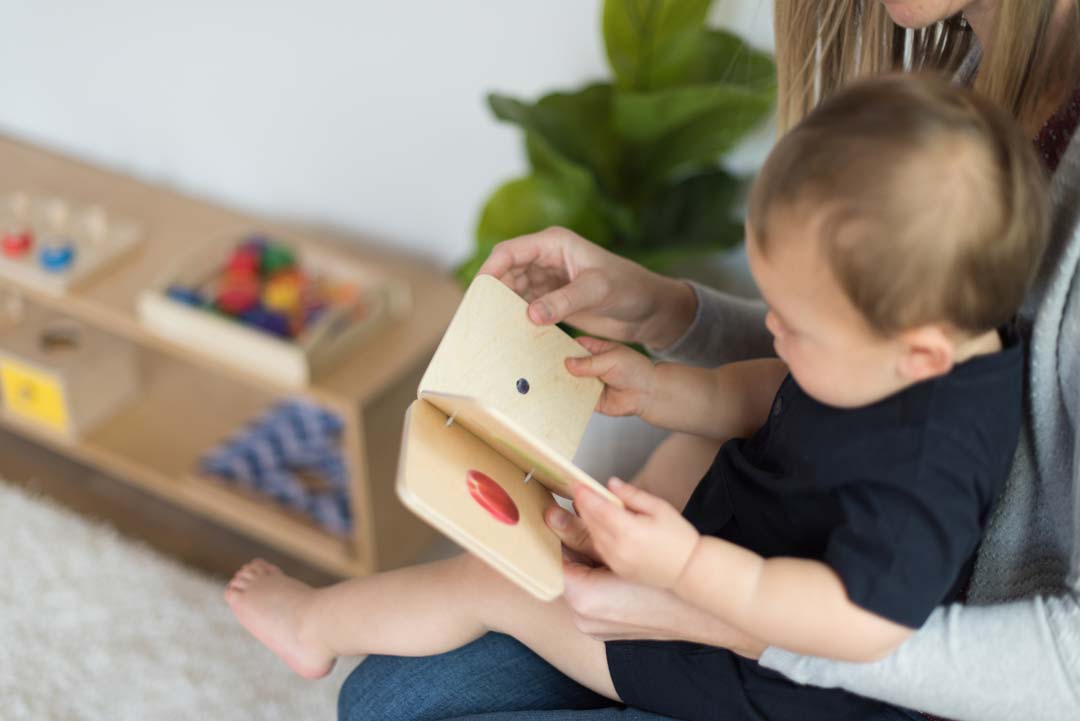
Born this way. As soon as newborns can see your face and hear your voice, they are already learning about language. At around two to four months, they begin to respond to different vocal tones. If you suddenly raise your voice, for example, your child might cry. If you laugh or make silly noises, she might gurgle and begin to laugh, too.
While crying is often perceived as a negative emotion, it’s actually a very important tool for babies. Not only does it help them learn to control the air that comes from their lungs, it also lets them practice using their vocal chords. Plus, it helps infants communicate in the only way they know how.
Milestone: Babbling. As the second half of a child’s first year progresses, so does her language. Gentle cooing transitions into babbling sounds that eventually link together to form real words—like mama and dada. Reading board books, naming familiar objects, singing, and gently conversing are all wonderful ways to teach your child new vocabulary and stimulate language skills.
When it comes to stages of child development, it’s important to note that babies master different skills at different ages, and so-called “normal” ranges vary widely. Some children learn how to walk at eight months, while others walk at eighteen months—both are considered perfectly normal, and neither is predictive of future ability. What’s ultimately most important is to provide your child with a safe, loving space to grow and thrive.
Thanks to the Monti Kids team for sharing their expertise with us. Learn more about their Montessori toy subscription program for children 0-3.


